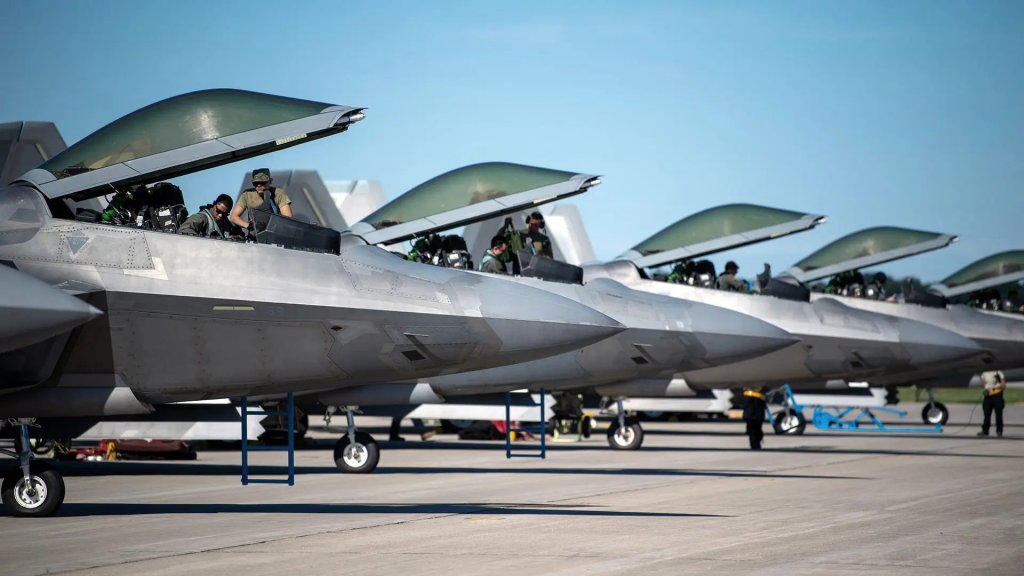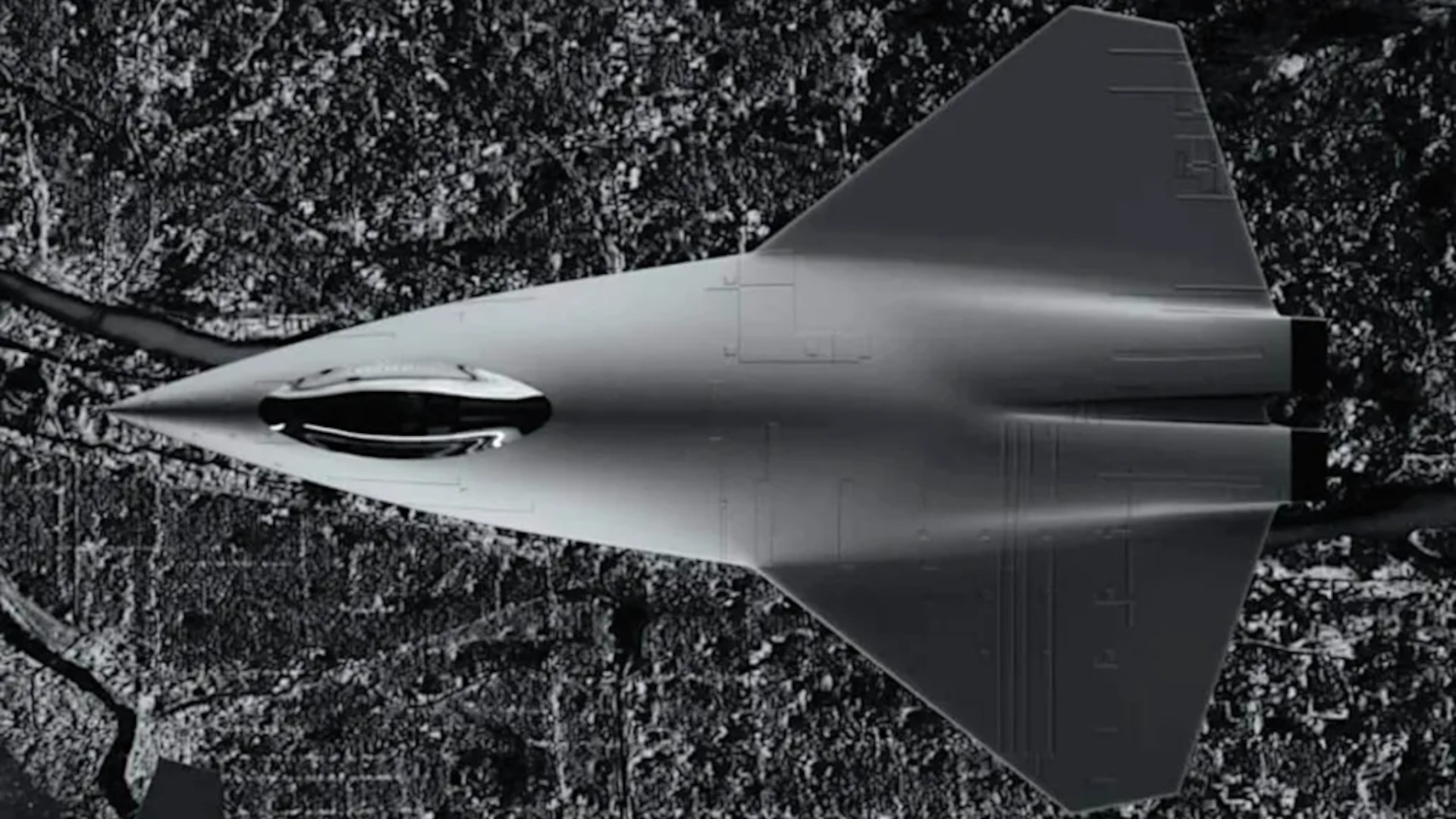The U.S. Air Force is taking another look at its requirements for a new crewed sixth-generation stealth combat jet it is developing as part of its Next Generation Air Dominance (NGAD) initiative. A key goal is looking for ways to lower costs associated with the jets, each of which could have a price tag of almost $250 million, even if that might mean sacrificing certain capabilities. At the same time, ensuring these aircraft will be able to work together with the service’s planned fleets of Collaborative Combat Aircraft (CCA) drones is another key objective of this re-assessment of the NGAD combat jet program.
Secretary of the Air Force Secretary Frank Kendall confirmed his service was taking another look at the NGAD combat jet in a recent interview with Defense News. This follows weeks of speculation about the future of this and other elements of the larger NGAD initiative following previous comments by Kendall, as well as Air Force Chief of Staff Gen. David Allvin. NGAD is the service’s flagship modernization effort, which also includes the CCA program, as well as work on ‘system of systems’ of new weapons, jet engines, electronic warfare suites, sensors, battle management capabilities, and other systems.

Boeing and Lockheed Martin are understood to be facing off to build the NGAD combat jet, but neither company has formally confirmed it is competing. Northrop Grumman announced it had dropped out of the running voluntarily last year. The Air Force has said in the past that it hopes to begin fielding these new stealth aircraft before 2030.
“It’s a very expensive platform,” Kendall told Defense News last Friday, per a story published today. “It’s three times, roughly, the cost of an F-35, and we can only afford it in small numbers.”
Kendall has said in the past that the NGAD jets would cost “multiple hundreds of millions of dollars.” In 2018, the Congressional Budget Office estimated the unit cost of a similar future stealth combat aircraft, then referred to as Penetrating Counter Air (PCA), to be $300 million, or around $375 million in 2024 dollars.
The unit costs of the three existing variants of the F-35 fluctuate regularly due to inflation and other factors, and how those price tags should be calculated, to begin with, has long been a matter of debate. Last Fall, the U.S. military’s F-35 Joint Program Office told multiple outlets that the average unit price across all variants, to include their F135 engines, in the latest production lots, was around $82.5 million. At that price point, the estimated unit cost of a single NGAD combat jet would be around $247.5 million.
“Ideally, I’d like to get it down to less than an F-35, or at least in the ballpark of an F-35,” Kendall added in his recent interview. “F-35s, as you know, are not cheap airplanes.”
Kendall has, on more than one occasion, described the long-troubled F-35 program as “acquisition malpractice” and had vowed to avoid the same pitfalls with the NGAD combat jet program.

The Secretary of the Air Force did stress to Defense News that NGAD, to include the crewed combat jet component, remained a top priority for the service.
“The family of systems concept of Next Generation Air Dominance is alive and well,” he said “I can tell you that we are looking at the NGAD platform design concept to see if it’s the right concept or not. … We’re looking at whether we can do something that’s less expensive and do some trade-offs there.”
Kendall did not elaborate on exactly what those trade-offs might be and details about the NGAD combat jet’s expected performance and capabilities are limited. It is ostensibly intended to supplant the existing F-22 Raptor stealth fighter, but is expected to have much more expansive capabilities that will allow it to take on a wide array of roles and missions beyond just being a traditional fighter.

The War Zone has previously published detailed analyses based on available information about what we can expect from the NGAD combat jet performance-wise, as well as regarding its sensor, electronic warfare, and communications capabilities.
“What we’re looking for there is the most cost-effective propulsion system for the platform,” Kendall did tell Defense News when asked about whether advanced jet engines being developed under the Next Generation Adaptive Propulsion (NGAP) program were a major factor in the NGAD combat jet’s cost. NGAP is another element of the larger NGAD initiative.
“Having something that’s optimized to work with CCAs is another consideration as we look at NGAD,” Kendall added.
This is somewhat curious given that the Air Force has said its NGAD combat jet and CCA plans are directly linked. In March 2023, Kendall announced his service was looking to buy 1,000 CCA drones explicitly with the intent to pair them with the new sixth-generations stealth jet, as well as F-35A Joint Strike Fighters.
Kendall did note that “the CCA concept came along after the service had begun working to develop NGAD,” according to Defense News. The NGAD combat jet is an outgrowth of a Defense Advanced Research Projects Agency (DARPA) program called the Aerospace Innovation Initiative, which dates back to the mid-2010s. Multiple NGAD demonstrators have been flying since at least 2020.

Altogether, even with Kendall’s new comments to Defense News, the future of the NGAD combat jet and the rest of the NGAD initiative still seems very murky.
Speculation about the future of NGAD first emerged after Chief of Staff Gen. Allvin did not explicitly say the modernization initiative would be insulated from serious budget cuts the service expects to hit in the 2026 Fiscal Year during a fireside chat the Air & Space Forces Association hosted back in June.
“We do have to ask the fundamental question, what does an effective Air Force look like in the future?” Allvin said at that time, and added that his service was expecting the Fiscal Year 2026 budget to be “very, very thin across the board.”
“The deliberations are still underway, there’s been no decision made,” Allvin clarified shortly thereafter when asked specifically about potential cuts to the NGAD combat jet. “We’re looking at a lot of very difficult options that we have to consider.”
“There are a lot of things that we probably might not have contemplated a few years ago, we’re taking a hard look at,” Secretary Kendall had also told Aviation Week in an earlier interview in June. “The need for air dominance, obviously, is not going to go away. But what mix of systems and how we do that, I think, is something we can take another look at.”

This is all notably at odds with the Air Force’s 2025 Fiscal Year budget request, which is seeking a significant boost in funding for the NGAD combat jet and other elements of the overall modernization initiative, especially the CCA program. This is also in contrast to the U.S. Navy, which has already publicly deferred its own F/A-XX crewed sixth-generation stealth combat jet plans.
Questions have also now emerged about how any significant changes to the NGAD combat jet plans might impact Boeing, specifically. The company looks to be investing heavily, including in new infrastructure, to try to secure that contract amid major financial losses on a number of other U.S. military aviation programs, especially the KC-46 tanker and T-7 jet trainer. Boeing has also said it expects to shutter F/A-18E/F Super Hornet production in 2025 and shift those resources, in part, to work on advanced crewed and uncrewed aircraft.
“Yeah. I mean, we’re at risk,” Steve Nordlund, Vice President and General Manager of Air Domonance at Boeing told reporters during a recent sponsored trip, according to Breaking Defense. “But you take it one day at a time.”
Breaking Defense noted that even in saying that, Nordlund could still not explicitly confirm his company is competing for the NGAD combat jet contract.
All told, while Secretary Kendall has now insisted that the overall NGAD program is on sure footing, the specific plans for a new piloted sixth-generation stealthy combat aircraft look set to change in potentially substantial ways that could have broader impacts for the service and contractor vying to build the jets.
Contact the author: joe@twz.com
